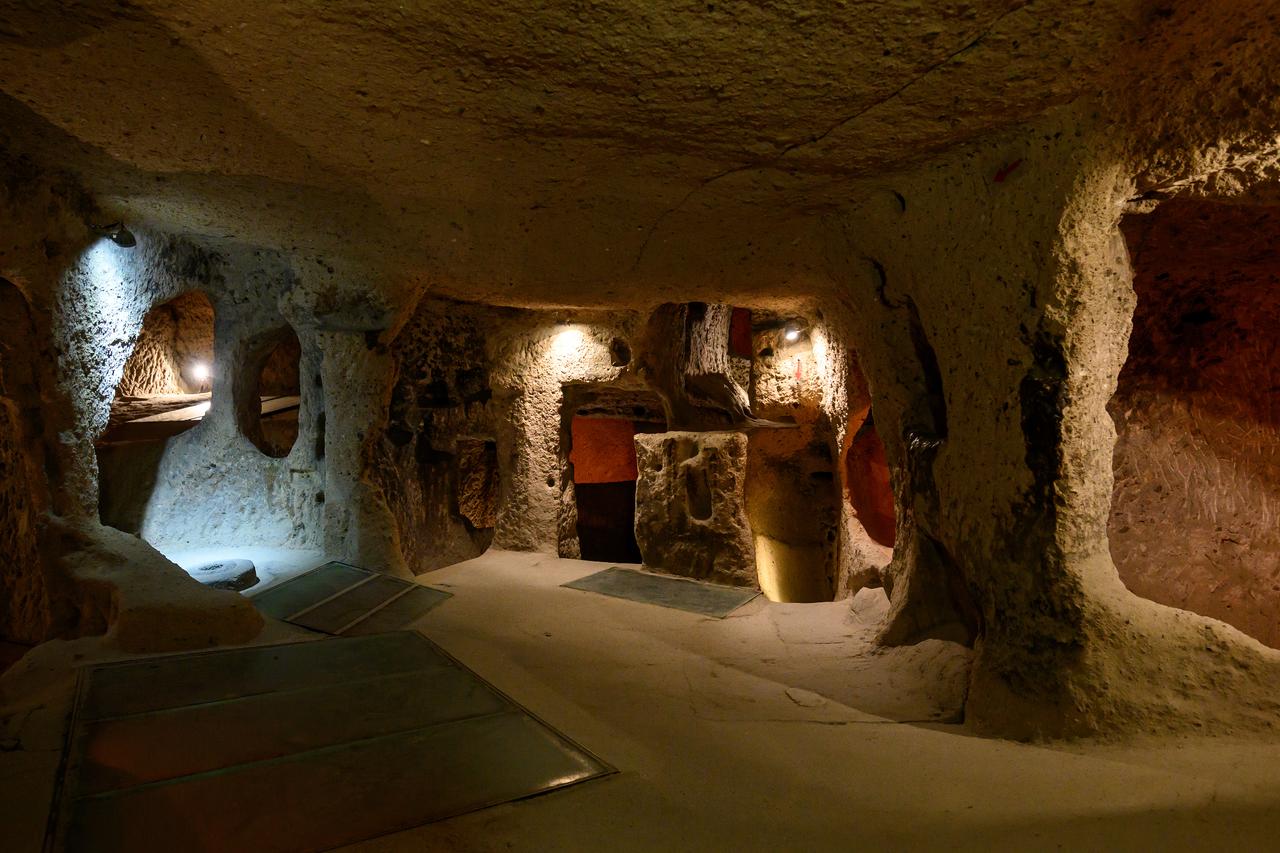
Nestled deep within the otherworldly landscapes of Cappadocia, in the Nevsehir Province of Türkiye, lie two of the most astounding feats of ancient engineering: the underground cities of Derinkuyu and Kaymakli.
These underground wonders, carefully carved into the soft volcanic rock of the area, provide a humbling window into a time when entire communities sought safety and created elaborate, self-sufficient civilizations beneath the surface of the earth.
For centuries, these hidden cities served as vital sanctuaries, primarily for early Christians fleeing persecution and later as havens during the Arab-Byzantine wars and subsequent invasions. Their rediscovery in the mid-20th century unveiled an astonishing testament to human ingenuity, resilience, and a profound connection to the earth itself.
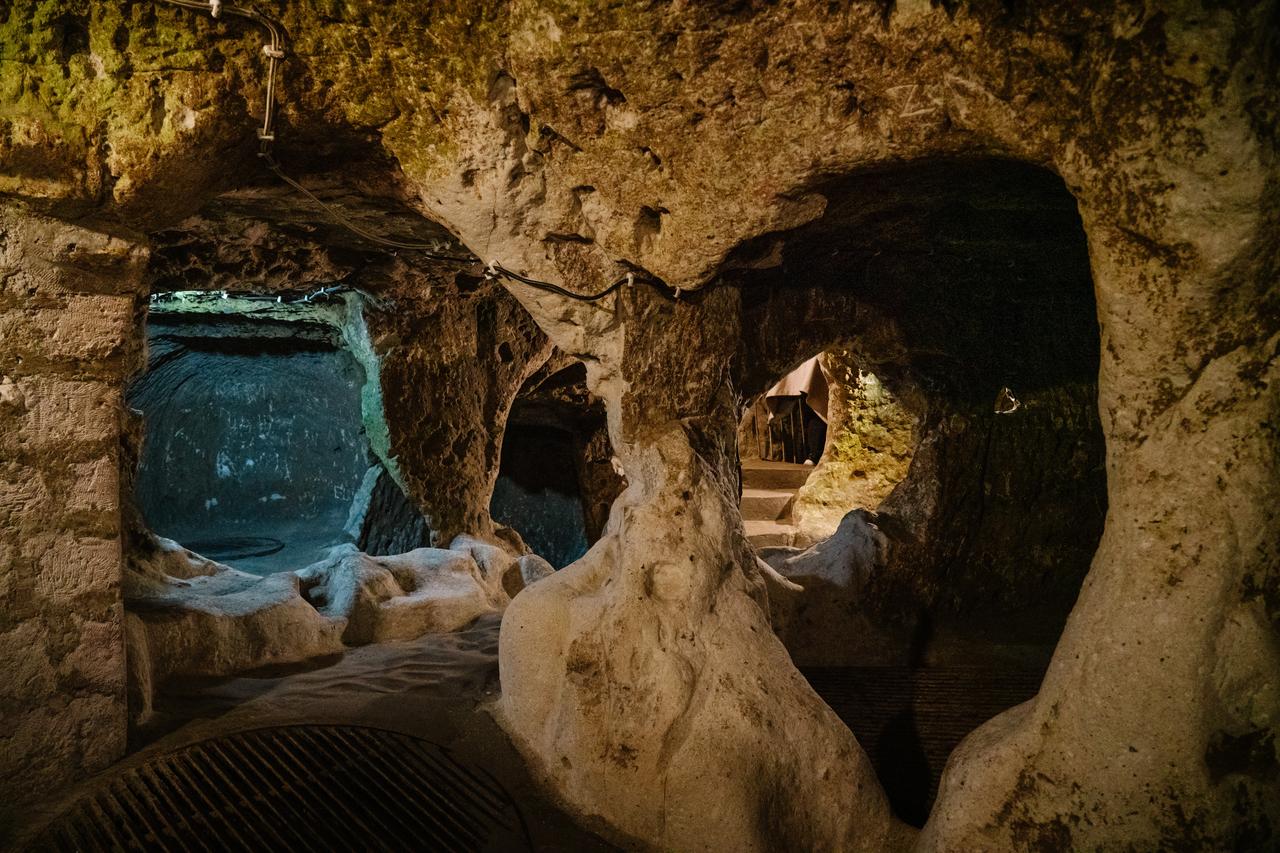
It is the largest and deepest excavated underground city in Cappadocia, estimated to reach around 85 meters (279 feet) with 18 levels, of which only eight are currently open to the public. It was capable of sheltering an astonishing 20,000 people, along with their livestock and food supplies, for extended periods. It was rediscovered by chance in 1963 by a resident during home renovations, and in 1969 was opened to visitors.
The origins of Derinkuyu are debated. Some archaeologists believe the earliest sections were built by the Hittites around 2,000 B.C., while others attribute it to the Phrygians in the eighth century B.C. Later expansions were made by early Christians, especially during periods of Roman persecution.
The city reached its full formation and most extensive use during the Byzantine era (780-1180 AD) as a crucial defense against Arab raids. It also provided refuge from Mongolian incursions in the 14th century and even offered protection to local Christian communities facing persecution well into the 20th century.
The city was in use for thousands of years, changing hands from the Phrygians to Persians, then to Christians during the Byzantine era. It was abandoned in the 1920s when the Cappadocian Greeks left the region.
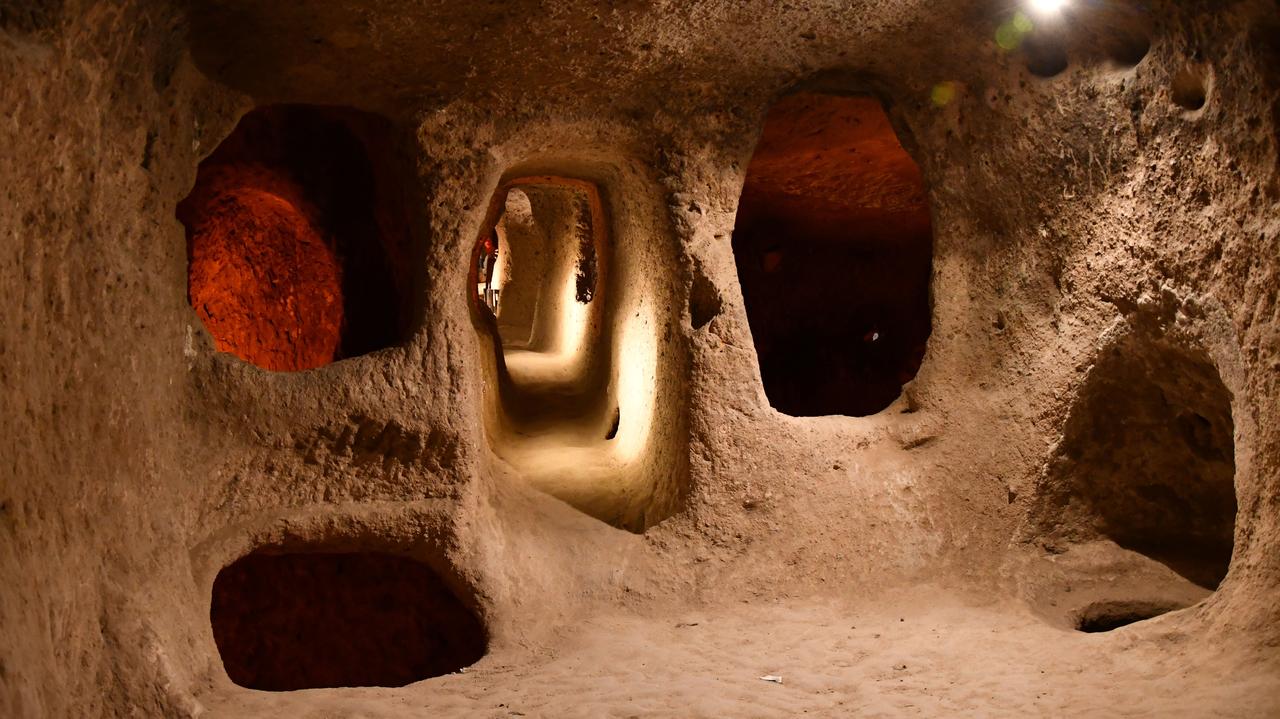
The distinguishing features of Derinkuyu are its immense size and intricate architecture. Its vastness as a maze of connected tunnels, rooms, and staircases plunging into the ground astounds visitors upon arrival.
One of Derinkuyu's most remarkable features is its highly advanced ventilation system. A complex network of over 50 shafts and chimneys ensured a continuous supply of fresh air throughout all levels, preventing suffocation and dispersing smoke from the many underground kitchens. One central, deep shaft also served as a well, providing a vital water source that could be sealed off from below during attacks.
A prominent feature on one of the lower levels is a spacious room with a barrel-vaulted ceiling, believed to have served as a religious school, complete with separate study rooms. Other chapels are also found throughout the complex, indicating the strong spiritual life of its inhabitants.
The city also has massive, circular stone doors weighing up to 500 kilograms, which were strategically placed at various points to seal off sections of the city, providing an impenetrable barrier against invaders. These doors could only be opened from the inside.
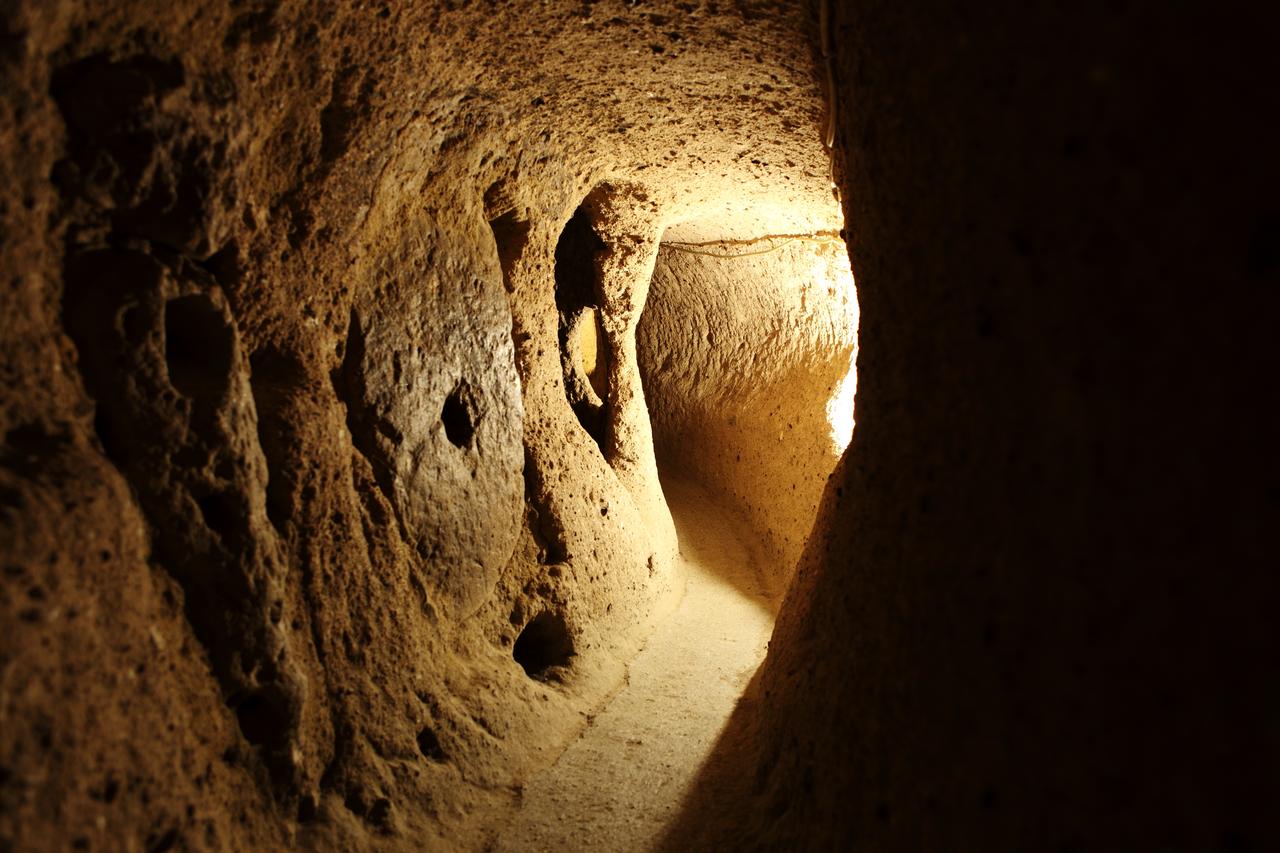
Kaymakli is also one of the largest and most fascinating subterranean cities in Cappadocia. It is an eight-level underground city, extending to approximately 85 meters deep. However, only the first four levels are currently open to visitors. It housed an estimated 3,500 people at its peak. There is a long tunnel, approximately 9 kilometers (5.6 miles), that is said to connect Kaymakli directly to Derinkuyu, though this passage is not accessible to visitors.
Kaymakli’s origins, like Derinkuyu, trace back to the Phrygian period. Historically, it was called Enegup, and it too was significantly expanded during the Byzantine era and served as a crucial refuge during times of conflict and persecution, including the Arab-Byzantine wars and later against the Mongols.
It remained in use by Christian inhabitants until the population exchange of 1923, and in 1964, Kaymakli was opened to the public.
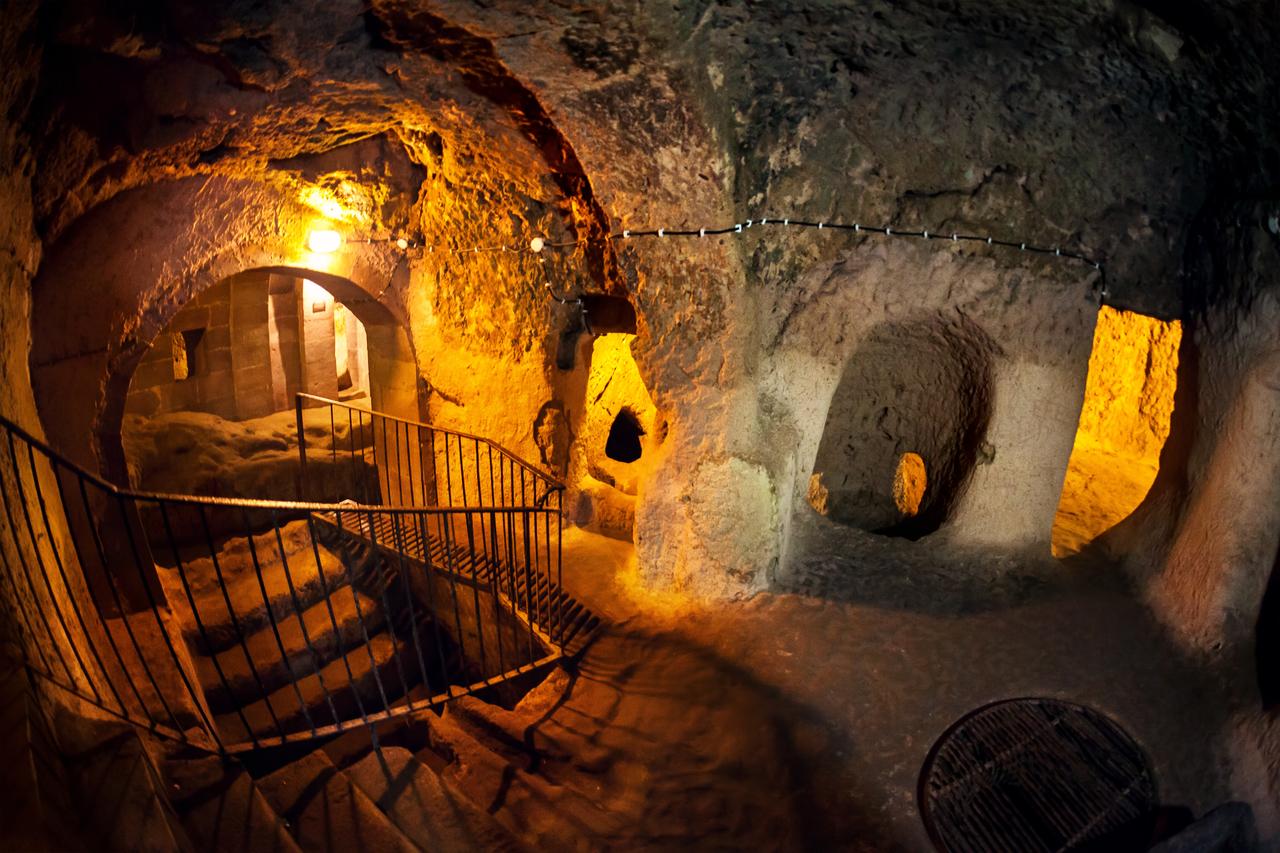
Kaymakli holds the distinction of being the widest underground city in Türkiye. Its layout offers a different, yet equally compelling, experience. It provides a particularly clear picture of communal life underground. Visitors can explore numerous small living quarters, some even showing sleeping niches for children. The layout suggests a strong emphasis on community and cooperation for survival.
Compared to Derinkuyu, Kaymakli's tunnels are noticeably narrower, lower, and more steeply inclined, which can make for a more challenging but authentic experience, especially for taller visitors or those with claustrophobia. This design likely served a defensive purpose, making it difficult for intruders to navigate.
Kaymakli features an extensive network of storage rooms, some of which are still used today by locals for storing produce. The underground city includes a church, and interestingly, some graves have been discovered within its chambers. The city also has a sophisticated ventilation system that is still functioning, ensuring airflow throughout the underground levels.
A unique discovery in Kaymakli is a block of andesite with relief textures on the third floor, which was recently identified as a tool used for cold-forming copper, indicating a level of craftsmanship and industry within the hidden city.
Visiting Derinkuyu and Kaymakli can be an unforgettable journey into the past. These cave cities stand as powerful reminders of human adaptability and the enduring spirit of communities who, when faced with adversity, literally dug deep to create a secure future.